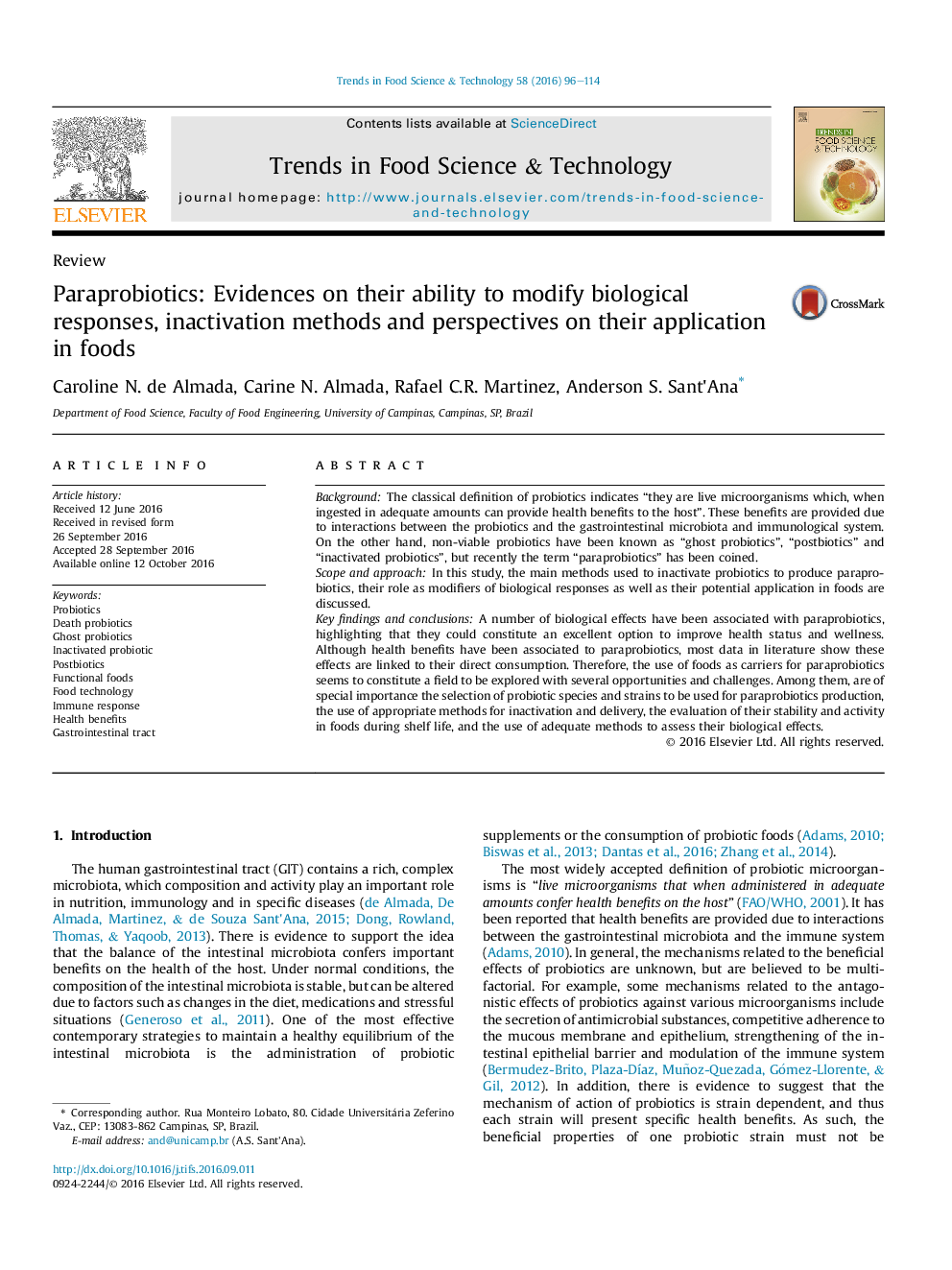| Article ID | Journal | Published Year | Pages | File Type |
|---|---|---|---|---|
| 5523811 | Trends in Food Science & Technology | 2016 | 19 Pages |
â¢Recently the term “paraprobiotics” has been coined for “inactivated probiotics”.â¢Paraprobiotics may be an excellent option to improve health status and wellness.â¢The main methods used to produce paraprobiotics are discussed.â¢The role of paraprobiotics as modifiers of biological responses is reviewed.â¢The potential application of paraprobiotics in foods is assessed.
BackgroundThe classical definition of probiotics indicates “they are live microorganisms which, when ingested in adequate amounts can provide health benefits to the host”. These benefits are provided due to interactions between the probiotics and the gastrointestinal microbiota and immunological system. On the other hand, non-viable probiotics have been known as “ghost probiotics”, “postbiotics” and “inactivated probiotics”, but recently the term “paraprobiotics” has been coined.Scope and approachIn this study, the main methods used to inactivate probiotics to produce paraprobiotics, their role as modifiers of biological responses as well as their potential application in foods are discussed.Key findings and conclusionsA number of biological effects have been associated with paraprobiotics, highlighting that they could constitute an excellent option to improve health status and wellness. Although health benefits have been associated to paraprobiotics, most data in literature show these effects are linked to their direct consumption. Therefore, the use of foods as carriers for paraprobiotics seems to constitute a field to be explored with several opportunities and challenges. Among them, are of special importance the selection of probiotic species and strains to be used for paraprobiotics production, the use of appropriate methods for inactivation and delivery, the evaluation of their stability and activity in foods during shelf life, and the use of adequate methods to assess their biological effects.
Graphical abstractDownload full-size image
